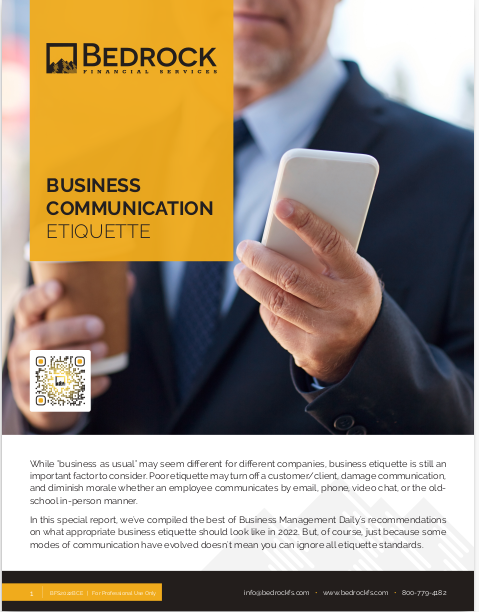Key Takeaways
-
When leads say no, it often reflects confusion, mistrust, or overwhelm—not necessarily objection to cost.
-
Shifting your focus from price defense to trust-building and clarity often leads to more conversions.
Why Price Isn’t the Real Objection
If you hear “it’s too expensive” often, it can feel like you’re losing to a number. But in most cases, price is a placeholder objection. It signals hesitation, not refusal. It means your lead hasn’t clearly understood the value, doesn’t trust the offer, or isn’t convinced the product fits their situation.
People rarely make buying decisions on price alone—they make them based on perceived value. If the value is high and clearly communicated, the cost becomes easier to justify. Your job isn’t to lower the price. Your job is to raise the perceived value.
What Leads Are Actually Thinking When They Say No
There are three primary mental blockers that cause a lead to say no:
1. “I Don’t Understand It”
Insurance is complex. Acronyms, jargon, terms like “underwriting,” “cash value,” and “deductibles” often lead to confusion. When a person doesn’t fully understand something, their default response is often a polite no. It’s a defense mechanism.
To overcome this:
-
Simplify your language. Explain terms like you would to a 10-year-old.
-
Use visual analogies: instead of explaining a term abstractly, show how it works in daily life.
-
Don’t push forward until you confirm understanding at each stage.
2. “I Don’t Trust You Yet”
If a lead doubts your intentions, your product knowledge won’t save the sale. Trust is the first thing you must earn. And in 2025, where attention spans are shorter and scams are louder, trust doesn’t come automatically.
Start by showing that you understand their needs before you offer solutions. Ask better questions. Listen longer. Let them see that you’re not rushing them toward a sale. Your patience and consistency are more persuasive than your product sheet.
3. “I Don’t Know If This Is Right For Me”
When a person isn’t sure a product fits their specific needs or timeline, they hesitate. Most of the time, they just don’t know how to judge. They don’t have a benchmark. They don’t know what “right” looks like.
You need to give them that frame of reference:
-
Show them what a good fit looks like.
-
Contrast it with a poor fit.
-
Help them see themselves in the outcome.
They don’t want the best plan—they want the right one. When they can see the alignment clearly, it removes uncertainty.
How to Respond to a No Without Getting Defensive
You’re not trying to win a debate. You’re trying to find the truth. When a lead says no, resist the urge to jump in with facts. Ask yourself: what are they actually uncertain about?
Use questions like:
-
“Can I ask what part felt off or unclear?”
-
“What would need to be true for this to feel like a yes?”
-
“Are you open to exploring this from another angle, just so we can make sure it’s not a missed opportunity?”
These questions show you care about the right fit, not the sale. That alone builds rapport.
The Role of Timing in Objections
A no at the wrong time is not the same as a no forever. Many leads are in a holding pattern, thinking about job changes, upcoming travel, or family events. When they say no, they may be saying “not right now.”
That’s why consistent follow-up matters. Here’s how you can align better with their timing:
-
Schedule check-ins 30, 60, or 90 days out.
-
Ask about upcoming life changes: retirement, children leaving home, home purchases.
-
Offer seasonal reviews: “This time of year, we often help people adjust their plans for X. Would that be helpful?”
Why Emotional Friction Stops More Sales Than Financial Friction
You may think price is the main hurdle. But what stops more sales is emotional friction:
-
Fear of making the wrong decision
-
Anxiety over paperwork or processes
-
Stress about changing existing coverage
Help them feel at ease. Break big steps into smaller ones. Offer to handle paperwork. Explain each step before it happens.
You’re not just selling a policy. You’re offering peace of mind. That means you have to reduce mental burden, not just financial burden.
Educating Without Overloading
If people say no because they don’t understand, your instinct might be to explain more. But often, more information increases overwhelm.
Instead, focus on what matters most in the first conversation:
-
What risk are they trying to protect against?
-
What matters to them: flexibility, guarantees, or growth?
-
What’s their timeline?
Frame your answers to connect directly to their core concerns. Let the next layer of information come after they’ve expressed some curiosity.
Trust Is Built in Silence
One of the most underused tools in your conversations is silence. When you pause after a lead speaks, it shows you’re considering their words. It invites them to go deeper.
Filling every silence with sales points shows nervousness. Let your quiet moments signal confidence and care.
Also, remember that sending a follow-up video or voice note, especially in 2025 when digital communication is abundant but impersonal, can go a long way in humanizing your presence.
Consistency Wins Over Time
You won’t convert every lead the first time. Or the second. But in this industry, the agents who show up consistently build the most trust. Consistency communicates:
-
You’re not just after a sale—you’re here for the long term.
-
You remember what they said.
-
You’re willing to keep showing up even if they’re not ready yet.
That often changes a “no” into a “yes” six months later.
Letting Go of the Script
The longer you’re in sales, the more tempting it is to stick to scripts. But in 2025, clients can smell canned pitches from a mile away. They want personalization, not presentation.
Learn to pivot based on what you hear. Listen more than you speak. Start with curiosity, not conclusions. People don’t want to be educated—they want to be understood.
Your Presence Is the Product
Ultimately, leads are responding to you. Not just your knowledge, but your tone, your patience, your empathy, your pace.
When you’re calm, clear, and consistent, you become the difference between yes and no. Not the plan, not the price—you.
And when you invest in sharpening that presence, objections begin to dissolve naturally.
It’s Not About Price—It’s About Perception
Price is what they say. Perception is what they feel. Shift your focus to how they perceive:
-
The clarity of the offer
-
The value behind the cost
-
The security of working with you
When you shape those perceptions intentionally, you stop hearing no.
We Help You Build That Trust
You don’t need to lower your price. You need to raise your influence. That’s where we come in. At Bedrock Financial Services, we equip independent agents like you with the tools to nurture trust, stay top of mind, and close with clarity.
From appointment setting systems to high-converting CRM follow-ups, our platform gives you the confidence to keep showing up—professionally and personally.
Ready to shift how you sell? Sign up today and let’s raise the value they feel before they ever ask about the price.







